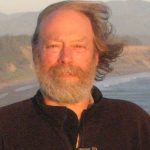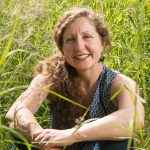New Study Shows Saving Tongass Old Growth Can Happen in Just Five Years
For Immediate Release – October 28, 2013
Contacts:
Dominick A. DellaSala, Geos Institute – (541) 482-4459 x 302, (541)-621-7223 (cell)
Catherine Mater, Mater Ltd. – (541) 753-7335
Ashland, OR – A new report prepared by Oregon-based Mater Ltd., using updated Forest Service timber acreage and age class distribution data, shows that the agency could complete transition to supplying a second growth logging economy in Southeast Alaska within 5 years.
In May 2010, Agriculture Secretary Tom Vilsack announced a framework to transition away from old growth logging on the Tongass National Forest, something the Forest Service said it believed could be done “quickly.” Early this month, Forest Service officials announced their “focus on identifying the timber base suitable to support a transition to young-growth management, in a way that supports the continued viability of the forest industry in Southeast Alaska.”
The Mater report shows such a transition could take place in as little as 5 years, shifting exclusively to previously logged stands of second growth, in the current land base already designated for logging and close to existing roads. Along with logging and manufacturing infrastructure adapted to work with small diameter logs, the transition would require changes to rules about how soon second growth stands can be cut. The report also recommends an aggressive regime to research and identify new value-added lumber grades and products to meet existing market demand.
According to Catherine Mater, the key to shortening the transition time was in using updated 5-year increment data about the amount and age of second growth in Tongass areas classified for logging and close to existing roads, and in understanding that mills designed to process second growth work efficiently with supply that closely resembles logs from 55-year old timber stands in southeast Alaska, not 90-year old stands that are currently harvested.
Mater said, “We were surprised by how much 55-year old second growth volume could be obtained to offset old growth logs in the Prince of Wales region, and that the transition could be notably accelerated if the administration adopts policy changes on when younger forests can be re-harvested.”
Mater conducted the report as an update to one the company prepared for Oregon-based Geos Institute last year, looking at possible entry into second growth markets for Sealaska Corporation. The updated Mater analysis was undertaken to provide an accurate assessment of whether sufficient 55-year old second growth volume exists within targeted Tongass National Forest ranger districts in the Prince of Wales (POW) sourcing region to allow the Forest Service to replace current old growth logging with timber from its own readily available second growth, on a sustainable basis. Such a transition could also create market opportunity for second growth volume potentially supplied from other land holdings in Southeast Alaska in the future such as Sealaska Corporation.
The Tongass rainforest is one of the world’s last remaining intact temperate rainforests. It supports the most abundant salmon fishery on earth and stores vast amounts of carbon important in climate regulation. Decades of old growth logging eliminated nearly all of the largest trees, and the remaining old-growth forests are vital to the region’s salmon and subsistence economies.
Dominick DellaSala, Chief Scientist of the Geos Institute, and author of the award-winning “Temperate and Boreal Rainforests of the World: Ecology and Conservation,” stated, “The Mater report shows that there is clear potential to stimulate a new economic model in southeast Alaska where a viable wood products industry works side by side with ecologically sustainable tourism and fishing.
Key Findings of the Mater Report:
- A baseline volume of 15-million board feet (mmbf) per year, log scale, is needed to establish and sustain processing second growth logs in an existing, but upgraded, medium-sized sawmill in the Prince of Wales (POW) region.
- After a five-year transition period, the 15-mmbf/year log volume is achievable and will come from five Tongass Ranger Districts that have historically provided logs to the POW region.
- After a five year transition period and within the five targeted ranger districts, more than sufficient volume (15 mmbf/year) of second growth logs will be available for harvest at 55 years of age, to sustain an upgraded small log processing mill in the POW region over six decades before re-harvest occurs.
- The 55-year harvest regime will require lifting current cumulative mean annual increment (CMAI) restrictions now practiced by the Forest Service. These restrictions typically preclude re-entry of stands until trees are ~ 90 years old.
- Within the five targeted ranger districts, the 15 mmbf/year volume can be achieved from logging only in existing pre-commercially thinned (PCT) acres that are within 800 feet of functioning roads, on lands available for logging under the Tongass Land Management Plan.
- Additional log volume could be secured from PCT stands in the targeted ranger districts where serviceable roads are beyond the 800 foot limitation, from existing PCT stands where roads would need to be refurbished to access log supply, and from non-PCT second growth.
- New information to be released by the Forest Service at the end of this year is expected to show added second growth volume from the targeted ranger districts, above and beyond volume used in this analysis. This is also expected to increase second growth volume by distinguishing second growth natural disturbances from old growth, and updating information on second growth acres owned by the State of Alaska and private forestland holdings in southeast Alaska.
- New Tongass National Forest data for acres of second growth by age class distribution per ranger district were obtained from the Forest Service’s Sitka Wood Utilization Center provided in 5-year age class increments that further aided efforts to achieve a more refined analysis.
Mater Engineering is a 70+ year-old consulting forest products engineering and markets research firm serving worldwide clients. The firm has served a wide range of clients that range from Fortune 500 conglomerates to small-scale wood processing operations in rural regions of America. The firm is a recognized leader in the marketing of wood products and in new wood grade development.
Geos Institute is a science-based organization dedicated to catalyzing climate change solutions that include protecting the world’s most carbon-dense, older forests and aiding communities and land managers in developing climate action plans.
Click here for a reprint of the Oct. 29, 2013 news article in Greenwire.
Click here for a related news article by Ed Schoenfeld in the CoastAlaska News.
Join the Cornerstone Network
Sign up with a monthly donation and become part of our Cornerstone Network. Network members recieve the messages posted here first, delivered directly to your inbox. Your ongoing support is the foundation of our work.

 Samantha Medlock is President of Climate Risk Advisors, helping communities and organizations advance equity, sustainability, and resilience. Her career began chasing floods as a local official in Texas Flash Flood Alley—a hands-on experience that still shapes her approach to climate and disaster risk management.
Samantha Medlock is President of Climate Risk Advisors, helping communities and organizations advance equity, sustainability, and resilience. Her career began chasing floods as a local official in Texas Flash Flood Alley—a hands-on experience that still shapes her approach to climate and disaster risk management.
 Arsum is the Senior Adaptation and Coastal Resilience Specialist for the National Wildlife Federation’s Southcentral Region. In this role, she advances climate adaptation efforts, with a focus on nature-based approaches to address the impacts of climate change and extreme events across the Gulf region. She has authored and co-authored numerous publications on climate impact assessments and adaptation solutions. Additionally, she regularly participates in state-based coastal resilience and hazard mitigation planning across the Gulf, collaborating with regional and local stakeholders.
Arsum is the Senior Adaptation and Coastal Resilience Specialist for the National Wildlife Federation’s Southcentral Region. In this role, she advances climate adaptation efforts, with a focus on nature-based approaches to address the impacts of climate change and extreme events across the Gulf region. She has authored and co-authored numerous publications on climate impact assessments and adaptation solutions. Additionally, she regularly participates in state-based coastal resilience and hazard mitigation planning across the Gulf, collaborating with regional and local stakeholders. Frank is the former President of the Reinsurance Association of America. Frank currently serves on the Advisory Board of the OECD’s International Network for the Financial Management of Large-Scale Disasters, the RAND Center on Catastrophic Risk Management and Compensation, and the University of Cincinnati’s Carl H. Lindner III Center for Insurance and Risk Management Advisory Board.
Frank is the former President of the Reinsurance Association of America. Frank currently serves on the Advisory Board of the OECD’s International Network for the Financial Management of Large-Scale Disasters, the RAND Center on Catastrophic Risk Management and Compensation, and the University of Cincinnati’s Carl H. Lindner III Center for Insurance and Risk Management Advisory Board. Jim is a multilingual world traveler. Based in Bavaria during the 1970s, Jim spent most of this period in India, Afghanistan and Nepal, where he founded and operated a charitable medical clinic serving Tibetan Refugees. He settled in Oregon in 1983 on a forested ranch in the Umpqua National Forest.
Jim is a multilingual world traveler. Based in Bavaria during the 1970s, Jim spent most of this period in India, Afghanistan and Nepal, where he founded and operated a charitable medical clinic serving Tibetan Refugees. He settled in Oregon in 1983 on a forested ranch in the Umpqua National Forest. Dr. Micah Hahn is an Associate Professor of Environmental Health in the Institute for Circumpolar Health Studies at the University of Alaska-Anchorage. She received her joint PhD in Epidemiology / Environment and Resources from the University of Wisconsin-Madison and her MPH in Global Environmental Health from Emory University. Subsequently, she was a postdoctoral fellow for the CDC Climate and Health Program, and in this position worked collaboratively with the CDC Division of Vector-borne Diseases and the National Center for Atmospheric Research. Her research focuses on understanding the health impacts of climate change and working with communities to develop locally-relevant adaptation and resilience-building strategies. Dr. Hahn is also on the Management Team of the Alaska Climate Adaptation Science Center.
Dr. Micah Hahn is an Associate Professor of Environmental Health in the Institute for Circumpolar Health Studies at the University of Alaska-Anchorage. She received her joint PhD in Epidemiology / Environment and Resources from the University of Wisconsin-Madison and her MPH in Global Environmental Health from Emory University. Subsequently, she was a postdoctoral fellow for the CDC Climate and Health Program, and in this position worked collaboratively with the CDC Division of Vector-borne Diseases and the National Center for Atmospheric Research. Her research focuses on understanding the health impacts of climate change and working with communities to develop locally-relevant adaptation and resilience-building strategies. Dr. Hahn is also on the Management Team of the Alaska Climate Adaptation Science Center. Michael is a former Founding Principal of Resilient Cities Catalyst, a global non-profit helping cities and their partners tackle their toughest challenges. He is currently the Executive Director of Climate Resilience Academy at the University of Miami.
Michael is a former Founding Principal of Resilient Cities Catalyst, a global non-profit helping cities and their partners tackle their toughest challenges. He is currently the Executive Director of Climate Resilience Academy at the University of Miami. Dr. Quintus Jett is a consultant, educator, and strategist for public causes. He has a doctorate in Organizations & Management from Stanford University, and a two-decade faculty career which spans schools, departments, and programs of business, engineering, liberal studies, divinity, and public and nonprofit management. Following Hurricane Katrina in 2005, Dr. Jett launched a volunteer project in New Orleans, which enlisted residents, students from over a dozen colleges and universities, and hundreds of others to field map the city’s Gentilly district, Lower Ninth Ward, and New Orleans East. Dr. Jett is an innovator in higher education, bridging the divide between academic research and the other priorities of the modern university, including student access and diversity, community engagement, and providing foundations for life-long learning in today’s rapidly changing world.
Dr. Quintus Jett is a consultant, educator, and strategist for public causes. He has a doctorate in Organizations & Management from Stanford University, and a two-decade faculty career which spans schools, departments, and programs of business, engineering, liberal studies, divinity, and public and nonprofit management. Following Hurricane Katrina in 2005, Dr. Jett launched a volunteer project in New Orleans, which enlisted residents, students from over a dozen colleges and universities, and hundreds of others to field map the city’s Gentilly district, Lower Ninth Ward, and New Orleans East. Dr. Jett is an innovator in higher education, bridging the divide between academic research and the other priorities of the modern university, including student access and diversity, community engagement, and providing foundations for life-long learning in today’s rapidly changing world. Scott is Monfort Professor of Atmospheric Science at Colorado State University. He has written about 100 publications in the peer-reviewed climate literature, is a former editor of the Journal of Climate, and served for five years as founding Science Chair of the North American Carbon Program.
Scott is Monfort Professor of Atmospheric Science at Colorado State University. He has written about 100 publications in the peer-reviewed climate literature, is a former editor of the Journal of Climate, and served for five years as founding Science Chair of the North American Carbon Program. Linda has many years of experience in disaster preparedness and resilience. She has been an elected official on the Linn County Iowa Board of Supervisors, Chair of the Metropolitan Planning Organization, the East Central Iowa Council of Governments, the statewide Mental Health Developmental Disability and the Linn County Board of Health. Langston is a former president of the National Association of Counties (2013-2014).
Linda has many years of experience in disaster preparedness and resilience. She has been an elected official on the Linn County Iowa Board of Supervisors, Chair of the Metropolitan Planning Organization, the East Central Iowa Council of Governments, the statewide Mental Health Developmental Disability and the Linn County Board of Health. Langston is a former president of the National Association of Counties (2013-2014). Ken works with families and organizations as a mediator, organizational consultant, trainer and facilitator. Along with his passion for helping people prepare for and reduce climate change, Ken also volunteers as a mediator through Mediation Works and is passionate about supporting youth through mentoring with Boys to Men of Southern Oregon.
Ken works with families and organizations as a mediator, organizational consultant, trainer and facilitator. Along with his passion for helping people prepare for and reduce climate change, Ken also volunteers as a mediator through Mediation Works and is passionate about supporting youth through mentoring with Boys to Men of Southern Oregon. Matthew is a retired high school teacher who was once honored as Oregon High School Social Studies Teacher of the Year. Before his teaching career he was in the restaurant business in Portland. He is also a lawyer who has been a member of the Oregon State Bar Association since 1980.
Matthew is a retired high school teacher who was once honored as Oregon High School Social Studies Teacher of the Year. Before his teaching career he was in the restaurant business in Portland. He is also a lawyer who has been a member of the Oregon State Bar Association since 1980. Andrea is the Resilience Policy Advisor for the North Carolina Office of Recovery and Resiliency. She works across state agencies and with local governments to increase the state’s resilience to the impacts of climate change.
Andrea is the Resilience Policy Advisor for the North Carolina Office of Recovery and Resiliency. She works across state agencies and with local governments to increase the state’s resilience to the impacts of climate change.